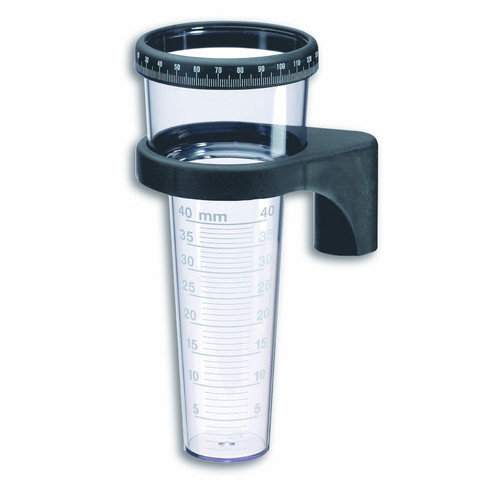How to Select the Right Rain Gauge for Reliable Rainfall Tracking
How to Select the Right Rain Gauge for Reliable Rainfall Tracking
Blog Article
Unveiling the Science Behind Rain Evaluates: Just How These Gadgets Play a Vital Role in Climate Study and Ecological Surveillance
Rainfall determines, apparently straightforward gadgets, hold an extensive significance in the realm of environment research study and ecological surveillance. These simple instruments quietly gather among nature's most important aspects-- rains. Behind their plain exterior lies a complex science that is crucial for understanding the dynamics of our environment. As we peel back the layers of this clinical shroud surrounding rain gauges, we uncover a world where precision, information precision, and thorough monitoring merge to introduce a deeper understanding of our changing climate and its impact on the planet.
Significance of Rainfall Gauges
Rain gauges play a vital role in tracking and measuring rainfall degrees, offering important data for environment study and evaluation. These devices are basic in measuring the quantity of rainfall that occurs in a details area over a particular duration. By determining and collecting rain, rainfall assesses offer beneficial insights right into the circulation and strength of precipitation, helping meteorologists, hydrologists, and climatologists in understanding climate patterns and patterns.
Furthermore, lasting data collected from rainfall assesses aids in analyzing climate change impacts and patterns, adding significantly to scientific research and decision-making processes. In essence, rain determines offer as vital tools in the field of weather forecasting and environmental science, playing a vital duty in progressing our understanding of weather condition and climate characteristics.
Kinds Of Rain Scales

Performance and Operation
In the realm of climate research study and atmospheric research studies, the effectiveness of rain gauges hinge on their intricate functionality and specific functional systems. Rain gauges are made to precisely determine the amount of rainfall that drops over a certain location during a collection duration. These devices generally include a channel that accumulates rainwater and channels it right into a determining tube. The gauging tube is noted with adjusted measurements that enable the exact quantification of rains.
The functionality of rainfall evaluates is based on the principle of collecting and measuring rain in a standardized manner. This accumulated data is essential for recognizing local climate patterns, tracking long-lasting climate patterns, and analyzing environmental effects. To ensure exact dimensions, rain assesses demand to be strategically put in open Recommended Site locations away from obstructions such as buildings or trees that can disrupt the collection process.
The operational element of rainfall gauges involves routine upkeep to avoid particles accumulation, calibration checks to preserve measurement precision, and information taping for evaluation (rain gauge). Overall, the functionality and operation of rain assesses are important for collecting dependable precipitation data important to climate study and ecological monitoring
Role in Climate Research
Given the crucial relevance of exact rainfall dimensions in recognizing climate patterns and ecological effects, the role of rainfall gauges in climate research is vital. Rainfall assesses supply crucial information for environment research by quantifying the quantity of rainfall that drops over a certain location throughout an offered duration. This information is crucial for checking long-term trends in rainfall patterns, assessing the influence of climate change on rainfall circulation, and enhancing environment models.

Environment researchers make use of data accumulated from rain gauges to assess variations in rainfall degrees, recognize local climate patterns, and evaluate the performance of water source administration strategies. By contrasting historical precipitation information with current dimensions, researchers can find shifts in precipitation patterns, such as adjustments in the regularity or intensity of rains events. This info is vital for comprehending just how climate adjustment is influencing precipitation characteristics and can help policymakers make informed choices relating to adjustment and mitigation methods.
Applications in Ecological Tracking

In flooding forecasting, rain scale information aids to track rains intensity and circulation, permitting authorities to provide timely warnings and take necessary measures to alleviate flooding dangers (rain gauge). Drought surveillance depends on rain gauge data to analyze dampness levels in the soil and track precipitation shortages, aiding in the recognition of drought-prone locations and the implementation of dry spell feedback strategies
Moreover, rainfall gauge information plays an essential function in water resource management by providing details on water accessibility and usage patterns. This data is used to company website make informed choices concerning water allocation, preservation steps, and lasting water resource preparation. Additionally, in farming, rain scale data assists farmers in maximizing irrigation timetables, crop option, and general ranch monitoring methods based on regional rainfall patterns. In general, rainfall evaluates are vital tools in ecological monitoring, using valuable insights that add to notified decision-making and lasting hop over to here resource monitoring.
Verdict
In final thought, rainfall gauges are necessary devices for gauging precipitation, supplying beneficial information for environment study and ecological surveillance. With different types and performances, rain evaluates play a critical duty in recognizing precipitation patterns and their influence on the atmosphere. By accurately measuring rains, these tools add to the innovation of clinical expertise and aid in making notified decisions associated to water resource administration and catastrophe preparedness.
Rainfall determines play an indispensable role in tracking and determining precipitation degrees, supplying vital data for environment research study and evaluation. The common rainfall scale, known as the "tipping bucket" gauge, is one of the most generally utilized devices. Ultrasonic rainfall assesses use noise waves to find the existence of rainfall, supplying real-time data on rainfall levels.Climate scientists use data accumulated from rain gauges to examine variants in precipitation levels, determine regional environment trends, and examine the effectiveness of water resource administration strategies.In verdict, rain assesses are vital devices for measuring rainfall, providing beneficial data for environment study and ecological tracking.
Report this page